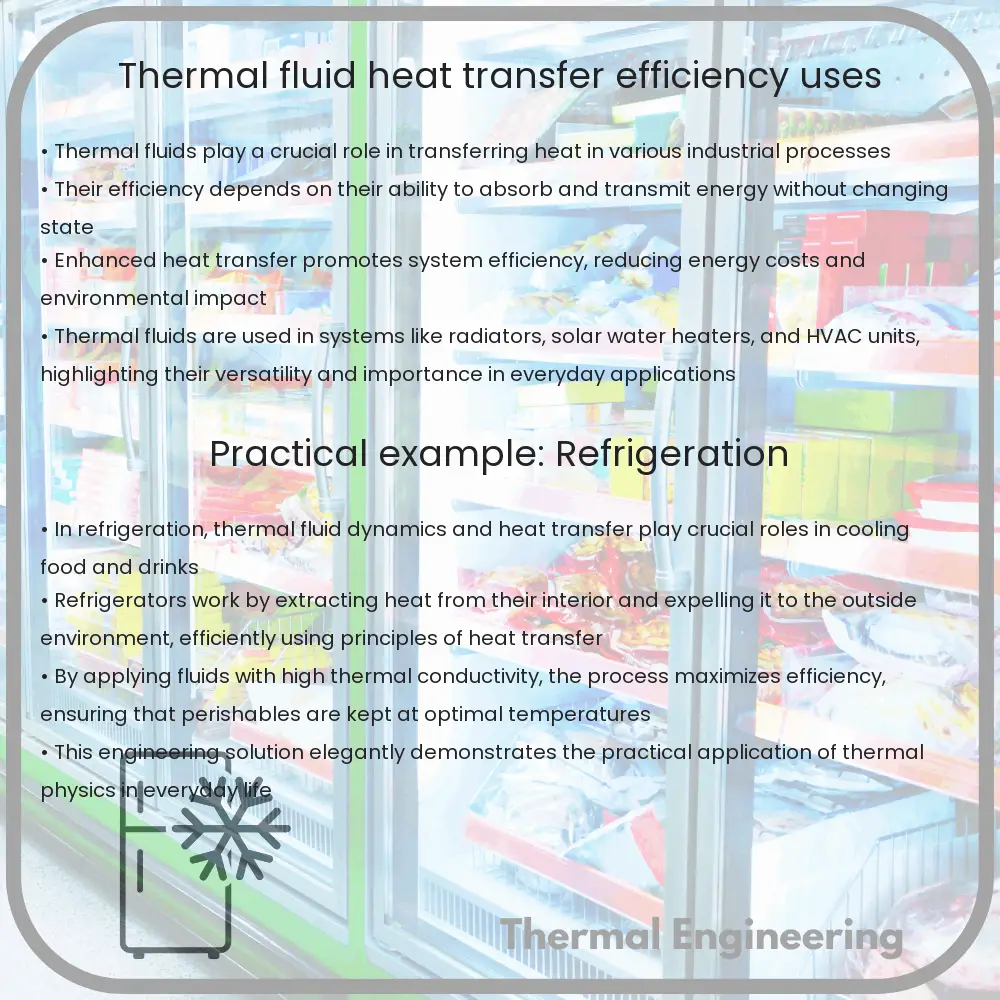Learn about thermal fluids, their roles in heat transfer processes, and their efficiency and applications in various industries.

Understanding Thermal Fluids: Heat Transfer, Efficiency, and Uses
Thermal fluids, also known as heat transfer fluids, play a crucial role in transferring heat in a wide range of industrial processes. These fluids help in maintaining temperature by absorbing, transporting, and releasing heat in systems designed for thermal processing. The efficiency of heat transfer, the properties of thermal fluids, and their applications are fundamental in engineering fields ranging from chemical manufacturing to renewable energy systems.
The Basics of Heat Transfer with Thermal Fluids
The primary function of thermal fluids is to facilitate the movement of heat without requiring the fluid itself to undergo a phase change (from liquid to gas or vice versa). This characteristic minimizes the energy loss and maximizes efficiency in thermal systems. Heat transfer with thermal fluids can occur through three primary mechanisms: conduction, convection, and radiation.
- Conduction: This is the process of heat transfer through direct molecular contact. Heat is transferred from the hotter part of the fluid to a cooler part without actual movement of the fluid particles.
- Convection: In convection, the thermal fluid transfers heat as it moves. This movement can be caused by external forces (like a pump) or by natural convection due to density differences within the fluid caused by temperature gradients.
- Radiation: Thermal radiation is the transfer of heat by electromagnetic waves. It can occur in thermal fluids when they are heated to high temperatures and can transfer heat even through empty space.
The rate of heat transfer in thermal fluids can be described mathematically by the equation:
Q = m * Cp * ΔT
where:
- Q is the heat transferred (in Joules)
- m is the mass flow rate of the fluid (in kilograms per second)
- Cp is the specific heat capacity of the fluid (Joules per kilogram per degree Celsius)
- ΔT is the temperature difference across the fluid system (in degrees Celsius)
Efficiency Considerations
Efficiency in the use of thermal fluids is primarily dependent on minimizing heat loss and maximizing the effective transfer of thermal energy. Key factors affecting efficiency include:
- Thermal Conductivity: Fluids with higher thermal conductivity can transfer heat more efficiently.
- Specific Heat Capacity: Fluids with a high specific heat capacity can store more thermal energy, leading to better regulation of system temperatures.
- Viscosity: Lower viscosity generally promotes better heat transfer as it enhances the fluid’s ability to flow and convect heat.
Common Uses of Thermal Fluids
Thermal fluids are utilized in numerous applications where precise temperature control is necessary:
- Chemical Processing: Thermal fluids provide the necessary heat for chemical reactions and processing without contaminating the products.
- Plastics and Rubber Manufacturing: Used to control the heat in molds and presses.
- Power Generation: They play a critical role in both conventional and renewable power plants, including solar thermal and geothermal stations.
- Food and Beverage Industry: They are used for heating or cooling in the production and preservation processes.
- Pharmaceuticals: Precise temperature control critical in drug manufacture and formulation is maintained using heat transfer fluids.
The choice of a thermal fluid is dependent on the specific thermal properties required, the operational temperature range, the compatibility with system materials, and safety or environmental considerations.
In conclusion, thermal fluids are indispensable in industries where heat plays a critical role in processes. Understanding their properties and mechanisms helps optimize their use, leading to enhanced efficiency and effectiveness in thermal systems.